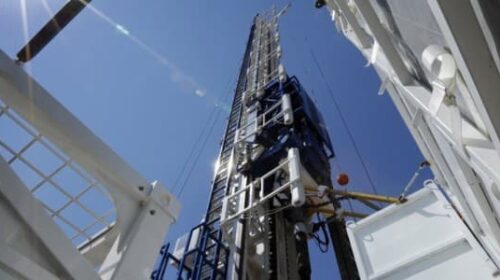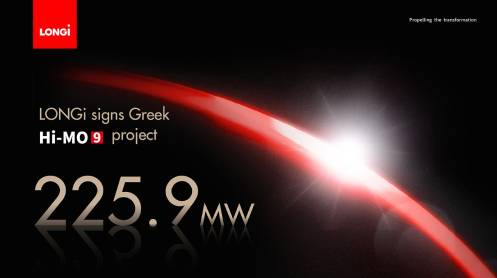Dozens of giant commodity and energy traders saw their profits explode during the pandemic thanks to their ability to leverage their storage facilities, global network of terminals and shipping fleets to cash in on supply disruptions, soaring energy prices and rising demand.
Vitol Group, the world’s largest commodity trader, generated record net income of $4.2 billion last year, with rival Mercuria raking in $1.25bn. Vitol announced a major share buy back to the tune of US$3 billion as a way of rewarding the roughly 450 senior staff who own the company. Glencore Plc also enjoyed record numbers, as did Trafigura’s trading arm. Smaller trading desks that lack the wherewithal and deep infrastructure networks of the giants were, unfortunately, unable to take advantage of one of the most volatile–and profitable–periods in the global energy industry.
But energy commodities trading is by no means the sole preserve of independent trading desks. Scores of Big Oil companies have set up secretive and sprawling trading divisions which frequently add billions of dollars to their bottom-lines.
Whereas several U.S. oil companies have tried their hand in oil trading, it’s European oil and gas supermajors that seem to have perfected the art and science of leveraging volatile oil markets to reap big profits.
To wit, last year, Exxon Mobil (NYSE: XOM) famously ditched its effort to build an energy trading business to compete with those of European oil majors after a period of low oil prices forced the company to heavily cut the unit’s funding amid broader spending cuts. The cuts left Exxon traders without sufficient capital to take full advantage of the volatile oil market. The coronavirus pandemic sent oil and gas prices crashing, before a strong rebound created an immense profit opportunity for trading operations willing to take on the risk. Unfortunately, cash flow problems and pressure from investors forced Exxon to systematically avoid risk by pulling most of the capital needed for speculative trades, limiting its traders to working only with longtime Exxon customers and subjecting most trades to high-level management review.
Related: German Chancellor: Germany Could Keep Nuclear Power Plants Operating After All
BP Plc. (NYSE: BP), on the other hand, has managed to build one of the most successful energy trading ventures by an oil and gas major.
In its latest earnings call, the European supermajor reported that its underlying replacement cost profit–a metric similar to the net income figure commonly used by U.S. oil companies–climbed to $8.45 billion in the second quarter from $6.25 billion in the first quarter, reflecting strong refining margins, higher liquids realizations and exceptional oil trading performance. That figure was well above Wall Street’s expectations of $6.79 billion.
“The main driver of the large beat was another exceptional quarter of oil products trading,” RBC Capital Markets said in a note.
But those record profits were by no means a fluke. BP’s trading desk has been astute at taking advantage of highly volatile energy markets in the past, with former CEO Bob Dudley and his army of 3,000 traders displaying an uncanny ability to predict the oil price trajectory. For instance, Dudley famously told the media that “Prices will remain low for longer,” after oil prices plunged to their lowest in more than a decade in Jan. 2016. This time, though, his well-known mantra came with a kicker: “But not forever.”
Few grasped the special significance of Dudley’s comment. In essence, BP traders had turned bullish after months of slumping oil prices. BP’s trading arm argued that the price had fallen so far that it could only go up, and Dudley agreed. And, in complete secrecy, the company was willing to bet that its traders were right again and put its money where its mouth was. Indeed, Dudley authorized a daring trade that saw BP place a large bet on a rebound in oil prices. BP was already heavily exposed to (low) oil prices, yet it chose to double down in a bid to increase the exposure by buying futures contracts much as a hedge fund would. This wager, worth hundreds of millions of dollars, remained a closely guarded secret for years and was only divulged by Bloomberg in 2021. BP quietly bought Brent crude futures London on a “management position’’–a trade so large it had to be overseen by the company’s most senior executives.
And, the gamble paid off. By early February, oil prices were up a third, trading above $35 a barrel. By the end of May, oil prices hit $50 a barrel. A former BP executive with direct knowledge of the trade told Bloomberg that it “made a lot of money,” putting the payout at $150 million to $200 million. Publicly, however, BP said almost nothing.
BP’s rivals Shell Plc (NYSE: SHEL) and TotalEnergies (NYSE: TTE) are also some of the world’s largest commodity traders. Shell is actually the world’s largest oil trader, ahead of independent houses such as Vitol Group and Trafigura.
Massive trading floors that sometimes rival Wall Street’s biggest banks are becoming increasingly important to oil companies thanks to fears that global oil demand will soon fall off due to the global energy transition as well as concerns about climate change. However, much about the oil majors’ trading exploits go unreported, just like BP’s 2016 trade. But few shareholders would object: BP typically records from $2 billion to $3 billion annually from its trading desk, roughly equal to what the company’s upstream business generates in a normal year; Shell makes as much as $4 billion in pretax profit from trading oil and gas while French major Total is not far off.





